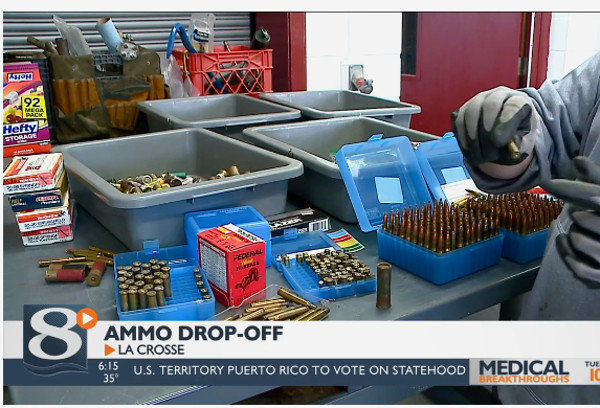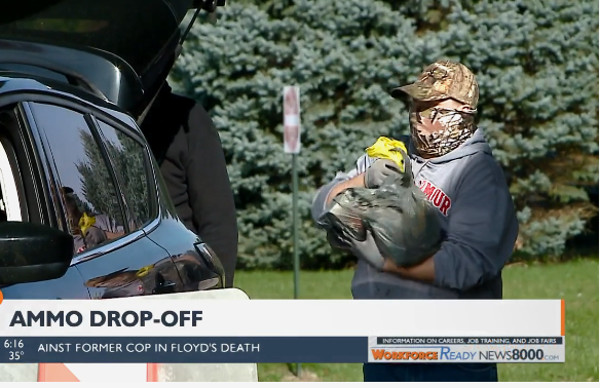
U.S.A. –-(AmmoLand.com)- On Saturday Morning, from 8 a.m. to noon, 24 October, 2020, the La Crosse Wisconsin landfill accepted ammunition from people who did not want it, and wished to dispose of it with them, rather than giving it to neighbors or friends.
La Crosse is located on the Mississippi river, and is in the heart of prime Wisconsin deer and pheasant hunting territory.
Fox squirrels abound in the woodlots bordering the cornfields common in the Wisconsin countryside. Geese are so plentiful, they have become a pest. The Mississippi flyway brings large flocks along with abundant local production. Shotguns and .22 rimfires are commonly used to hunt the squirrels. Only shotguns may be legally used to hunt waterfowl and other game birds.
I visit Wisconsin on a regular basis. Every little pond and pothole has its resident Canadian goose population. Wild turkey populations have exploded. They are common in urban wood lots and have become a pest where hunting with firearms is banned.

At the same time, the nation is in the throes of an ammunition and gun-buying spree as never experienced before. Many calibers of ammunition are difficult to find on store shelves. At this time, La Crosse County, Wisconsin, decided to accept ammunition that people no longer wanted. From news8000.com:
“Our most frequent request for ammunition disposal comes from people that find it, or are left behind by loved ones, and maybe it’s been sitting around for decades and they just don’t know what to do with it. We’re able to collect it and manage it for proper disposal, and solve a problem for our constituents as well,” said Scott Szymanski, the Operations Manager at the La Crosse County Solid Waste Facility.
They didn’t seem to have a large quantity turned in. In the picture below, someone dropped off what appears to be a few boxes of shotgun ammunition.

A couple of hundred various deer hunting rounds, including the ubiquitous .30-06 and .30-30 appeared in the video of the drop-off. There were some shotgun rounds and a smattering of handgun rounds. Deer hunting is a popular Wisconsin activity. Over 600,000 Wisconsin deer hunters buy deer hunting licenses each year.
It appears less than 500 rounds of ammunition were turned in, from the pictures. In the pictures, not one round of .22 rimfire was seen. .22 rimfire is the most common round of ammunition in the United States. About 5 billion rounds of the ammunition is produced in the United States each year. It is becoming hard to find on store shelves, which may explain why none of it appeared in the video of the ammunition drop-off.
No reports of entrepreneurs purchasing ammunition before it was turned in have surfaced. That does not mean it did not happen. It would help to explain the relatively small amount of ammunition collected. There are probably few La Crosse residents who do not know hunters, sportsmen, patriots, or entrepreneurs who would willingly help dispose of ammunition properly, without a fee or a trip to the landfill.
It appears the ammunition being dropped off was being placed into Midway plastic ammo boxes. No doubt, it was done so the ammunition could easily be transported to the facility which would incinerate it.
AmmoLand would love to hear from anyone who was present at the ammunition drop off in La Crosse, Wisconsin.
About Dean Weingarten:
Dean Weingarten has been a peace officer, a military officer, was on the University of Wisconsin Pistol Team for four years, and was first certified to teach firearms safety in 1973. He taught the Arizona concealed carry course for fifteen years until the goal of Constitutional Carry was attained. He has degrees in meteorology and mining engineering, and retired from the Department of Defense after a 30 year career in Army Research, Development, Testing, and Evaluation.

